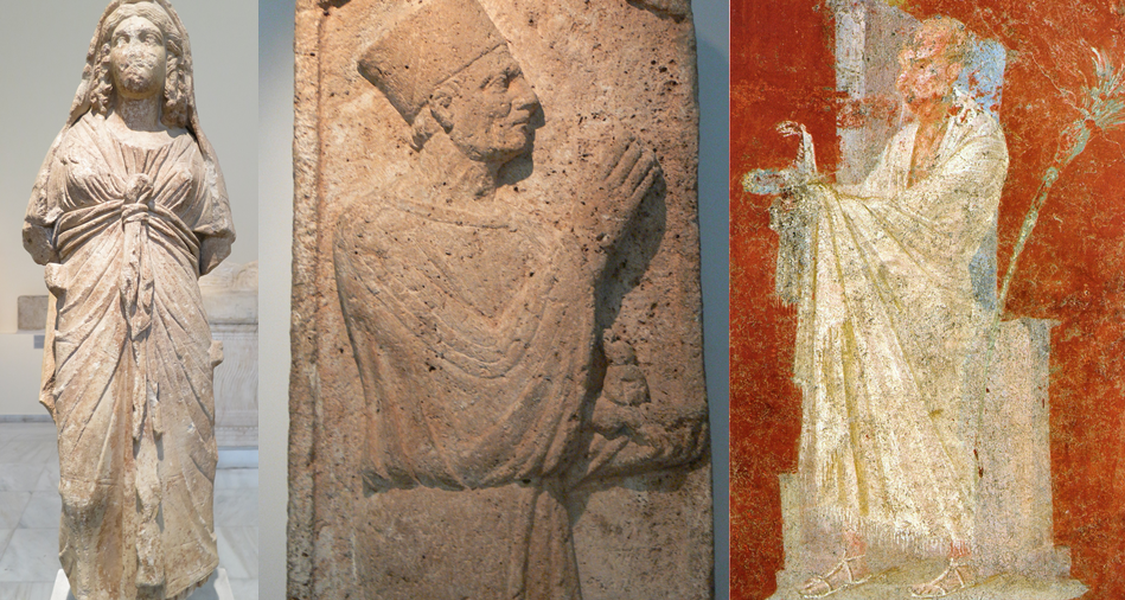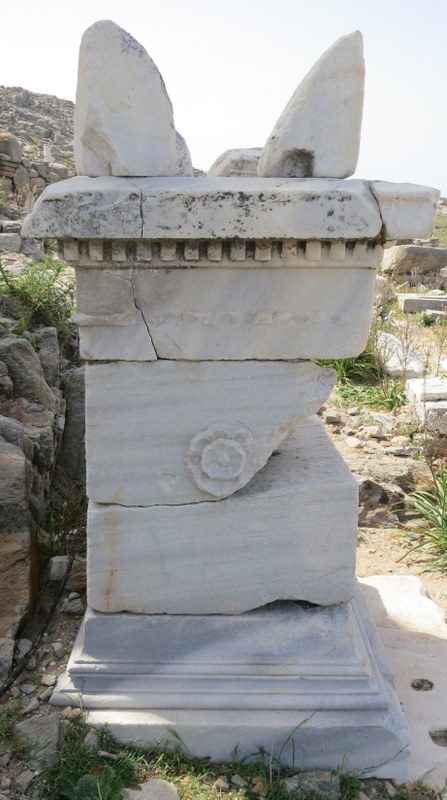Main Content
Tribute to Foreign Priests - Investigations on the Role of Cult Personnel in the Cults of Non-Greek Gods in Greece

Sabine Neumann (Project leader)
Ancient Greek religion was shaped by many different influences. Especially in Hellenistic times, cults and sanctuaries for Egyptian, Syrian, Thracian, and Phrygian gods appeared in Greece, enriching the local pantheon.
The MCAW Research Group investigates how cults for non-Greek deities, often brought by migrants, shaped the religious landscape of the host society and the religious institutions of the Greek poleis. We focus on the cult's personal, religious, and political agency. The role and complex identities of priests, cult leaders, aretalogues, dream interpreters, and other individuals involved in the cults of the "foreign" gods are still awaiting a systematic investigation. However, it must be assumed that they have had a massive influence on the local cults, political institutions of the polis, and the design of the sanctuaries.
Greek and Roman authors such as Herodotus (I, 181, 5; II, 2. 3), Diodorus Siculus (II, 29, 1-4), and Lucian of Samosata (De Syria Dea, 42-3) provide us with a picture of the priests in the sanctuaries of Egypt, Babylon, and Syria. They report on customs that were foreign to the Greeks, such as shaving of the head, wearing of white linen robes, and differences in sacrificial rituals, purification, and cult regulations.

In Hellenistic times, we hear about numerous immigrant priests who founded private sanctuaries in Greece, who often passed the offices on to their sons. In addition, resident migrants, including women, engaged in the cults of "foreign" deities together with Greek citizens in religious associations. Several cults, such as that of the Thracian goddess Bendis and the Greco-Egyptian gods Isis and Sarapis, were state-administered in Greek cities, which meant that the official priests were democratically elected among the Greek magistrates who held office for one year. In addition to the officially appointed priests, these state-administered sanctuaries could also employ cult specialists, whose ritual expertise ensured the authentic performance of the rites. The cult was thus under the control of the state-appointed (Greek) priest, who did not need to have any special knowledge of the rites to hold this office, while religious authority rested with the (foreign) specialist, who was often also in contact with the deity through divination.
In the project, we investigate based on epigraphic and archaeological evidence:the role and identity of cult personnel in the cults of non-Greek gods,
- the flexible negotiation processes of power positions and the coexistence of different conceptions of religious authority as well as
- the interactions between the political and social developments of the polis and the administration of the cults.
We examine:
- Forms of exoticitation of cult personnel in their appearance, as shown in portrait statues and reliefs on grave stelae. For example clothing, headgear, ethnic markings. Integration of "foreign" rites such as sacrificial rituals preserved by cult regulations in inscriptions, archaeobotanical and archaeozoological finds, prayers in non-Greek languages, specific dedications
- Role and importance of gender in sacred offices, e.g., deviations from the Greek practice that female deities had priestesses and male deities had priests
- Establishment of religious authority in the form of traditional knowledge, charisma, communication with the deity through dreams, oracles, and divine commands that gave autonomy and power to cult personnel
Negotiation processes and division of tasks between state-appointed priests and foreign cult specialists, privately administered shrines, and cult associationsImpact of political and social developments on the religious life of the poleis concerning the administration of foreign cults. For example, the transition from a priesthood elected annually by lot to the bestowal of offices for a lifetime, as occurred in numerous Greek poleis in the 2nd and 1st BCE
The project "Tribute to Foreign Priests", reveals new facets of ancient Greek religion and the social conditions of Greek cities by studying cult personnel in the cults of non-Greek deities. Our Sources include portrait statues and tombstones of priests and other cult personnel, as well as inscriptions in sanctuaries of Egyptian, Syrian, Phrygian, and Thracian deities in Greece. The latter quite often contains interesting insights into the administration of the cults as well into negotiation processes between the institutions of the poleis, cult associations, and individuals. By establishing theories and developing scientific methods to explore the links between ancient religion and multicultural processes, we ensure that the project will have a significant impact on the study of religious plurality in the ancient Mediterranean.